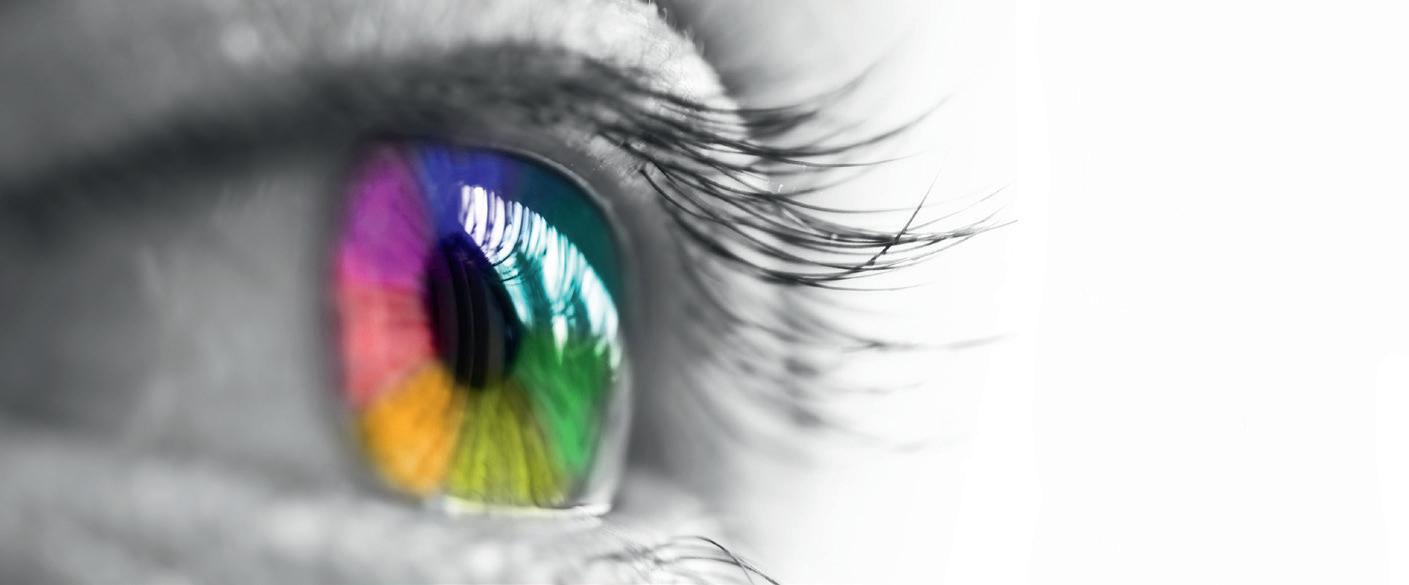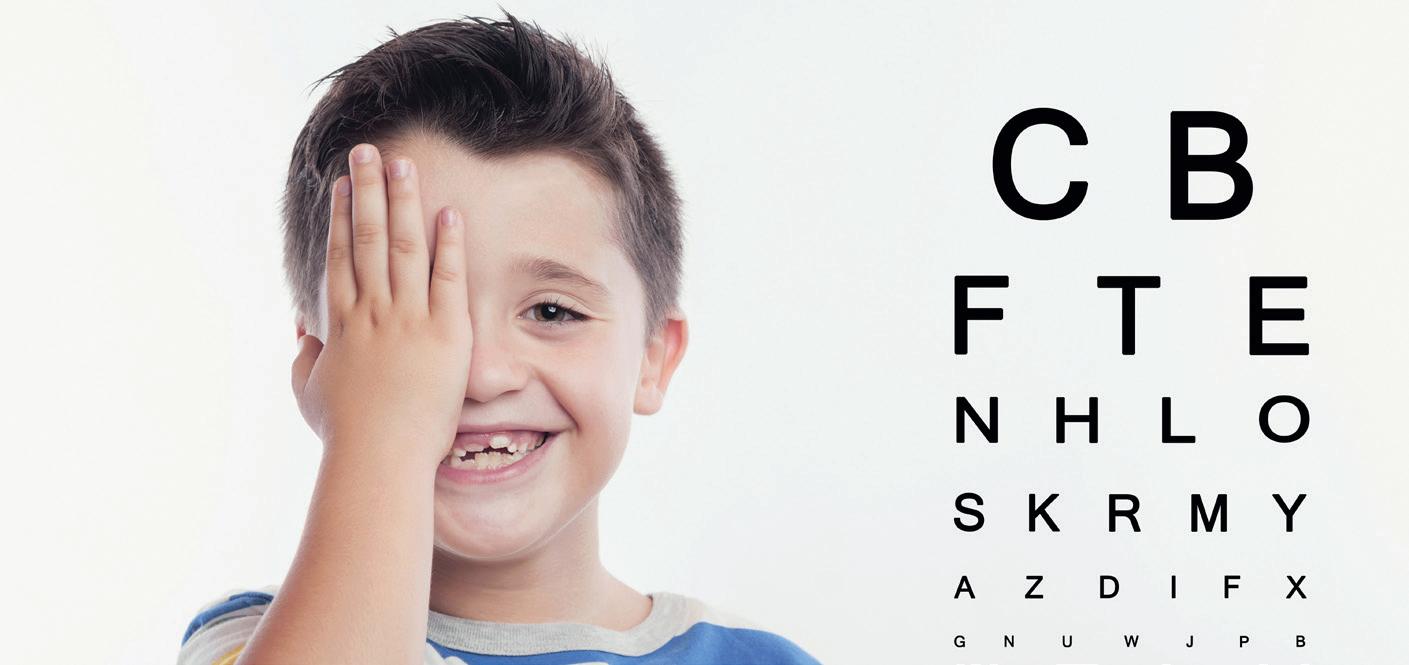
5 minute read
All about research
Studies on safety, eye health monitoring and myopia progression
Two of the following contact lens studies have focused on children in the past year. While one aimed to clarify how safe soft contact lenses are for children, the other looked at the effect of contact lenses on myopia progression in children. There's also news from the field of contact lens development – a smart CL that shows potential for eye health monitoring.
Advertisement
Safety of paediatric soft contact lens wear
Robin Chalmers et al. have examined the safety of wearing soft contact lenses for children [1]. The research was funded by CooperVision Corporation and was initiated to support CooperVision's regulatory submissions of MiSight 1 day contact lenses. The study measured the rate of adverse events (AE) in children who were prescribed soft contact lenses before they turned 13 years old to establish wearing safety among that age group. The review documented AE details from clinical practice charts and clinical trial data of 963 children and observed 2,713 years of wear across 4,611 visits. The evaluated subjects were first fitted while eight to twelve years old with various SCL designs, prescriptions and replacement schedules, and observed through to age 16. Compared to AE results derived exclusively from clinical trials, these data are thought to be more generalizable to real world experiences as myopia control soft contact lenses are prescribed more widely to young patients. Clinical records from office visits with potential AEs were independently reviewed by an adjudication panel to determine a consensus diagnosis. The current findings are very similar to but slightly lower than rates reported in previous studies of similar age groups, possibly attributed to the higher proportion of daily disposable lenses in the current study. The study found the annualized incidence rate of inflammatory events was less than one percent per year of wear. The majority of events were conjunctivitis or foreign body abrasions, reflective of this young population. The authors note that the study found a lower rate of microbial keratitis (7.4/10,000 years of wear) with a tighter confidence interval than other pediatric post-market studies. That rate has been found to be comparable to established rates of microbial keratitis in adults.
Smart contact lens sensor POC eye health monitoring

Early diagnosis is important for avoiding severe eye problems, such as exophthalmia or glaucoma. Such diagnoses rely on facile and reliable monitoring of several features with pathologic relevance, such as the amount of tears and intraocular pressure. Current methods usually require complex procedures and instruments operated by professionals, causing difficulties for point-of-care (POC) ophthalmic health monitoring. A research group led by Prof. Du Xuemin from the Shenzhen Institutes of Advanced Technology (SIAT) of the Chinese Academy of Sciences has developed a "smart" contact lens that can show real-time changes in moisture and pressure by altering colors. The results were published in the Journal of Materials Chemistry B [3] . This contact lens features periodic nanostructures within the poly(2-hydroxyethyl methacrylate) (pHEMA) hydrogel matrix, resulting in bright, tunable structural colors ranging from red to green to blue. The structurally colored contact lens sensor is made solely from a biocompatible hydrogel, without the addition of any chemical pigments, thus exhibiting biosafety and comfort for wearable applications. The spacings of periodic nanostructures within the pHEMA hydrogel are sensitive to changes in moisture and pressure, leading to real-time color changes in the contact lens. Zhao Qilong, first author of the study, reports that its color will not change over time in normal eye-simulation conditions but changes from red to blue in a xerophthalmia-simulation condition in about 25 minutes. Additionally, a linear decrease in the wavelength of the reflectance peak of the "smart" cosmetic contact lens is observed when human intraocular pressure changes in the pathological range. It can potentially be used for point-of-care (POC) diagnosis of xerophthalmia and high intraocular pressure disease.
Source: Abstract of study [3], EurekAlert 2020-02-18 [4]
Nearsightedness tends to begin between the ages of eight and ten and progresses up to about age 18. In a trial, conducted by Jeffrey Walline et al. at Ohio State and the University of Houston, almost 300 nearsighted children age 7-11 years were randomized into one of three groups of contact-lens wearers: single vision or multifocal prescriptions with a medium reading add of 1.50 diopters or a high add of 2.50 diopters. The findings were published in the Journal of the American Medical Association [5]. The study was funded by the National Eye Institute, part of the National Institutes of Health, and supported by Bausch + Lomb, which provided contact lens solutions. As a group, the participants' average prescription at the start of the study was -2.39 diopters. After three years, both the degree of myopia progression and the extent of eye growth were lower in the kids who had worn the high-add lenses. On average, the three-year eye growth among kids with the high-add bifocals was .23 millimeters less than in kids wearing singlevision lenses. Medium-add lenses did not slow eye growth any more than single vision lenses. A bifocal contact lens prescription with the highest near-work correction slowed nearsightedness progression by 43 percent when compared to single-vision contact lenses. The researchers were aware of the need to balance the reduction of eye growth with any risks associated with subjecting children to strong reading power long before they need that level of correction. When testing their ability to read gray letters on a white background, there was a two-letter difference between single-vision lens wearers and those wearing multifocal lenses. The research team is continuing to follow the same participants, treating them all with the high-add bifocal lenses for two years and then switching them all to single-vision contact lenses in order to evaluate the permanence of the treatment effect.

Sources: Abstract of study [5], EurekAlert 2020-08-11 [6]
Referenzen: [1] Chalmers, RL, McNally, JJ, Chamberlain, P, & Keay, L. Adverse event rates in the retrospective cohort study of safety of paediatric soft contact lens wear: the ReCSS study. Ophthalmic Physiol Opt. 2020. https://doi.org/10.1111/opo.12753, [2] https://www.eurekalert.org/pub_ releases/2020-12/mc-lso120820.php, [3] Wang, Y., Zhao, Q., Du, X. Structurally coloured contact lens sensor for point-of-care ophthalmic health monitoring. J. Mater. Chem. B, 2020, 8, 3519-3526. https://doi.org/10.1039/C9TB02389E, [4] https://www.eurekalert.org/pub_releases/2020-02/ caos-scl021820.php, [5] Walline JJ, Walker MK, Mutti DO, et al. Effect of High Add Power, Medium Add Power, or Single-Vision Contact Lenses on Myopia Progression in Children: The BLINK Randomized Clinical Trial. JAMA. 2020;324(6):571–580. doi:10.1001/jama.2020.10834, [6] https://www.eurekalert.org/pub_releases/2020-08/osu-ynk080620.php










